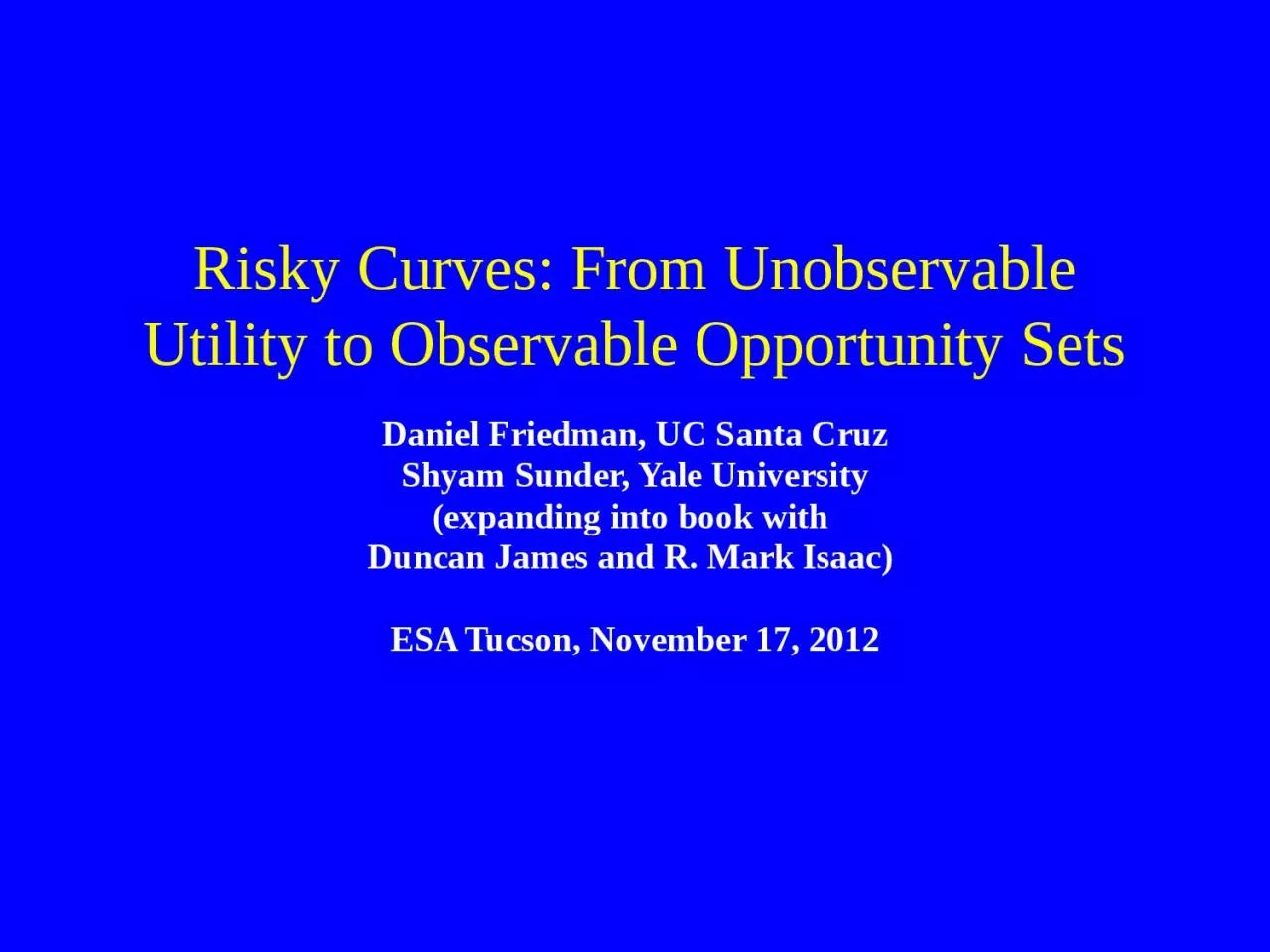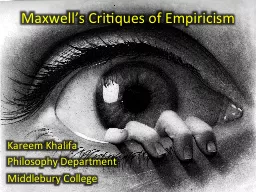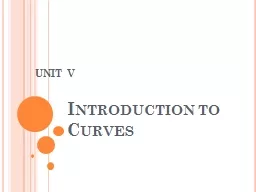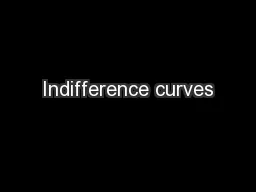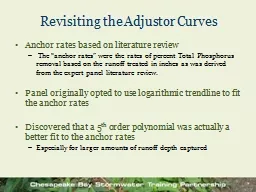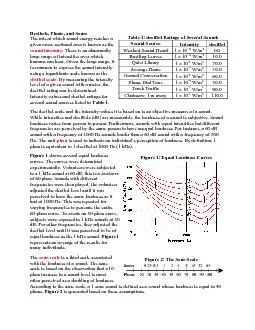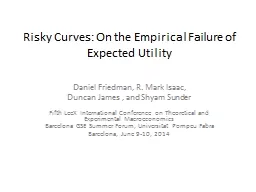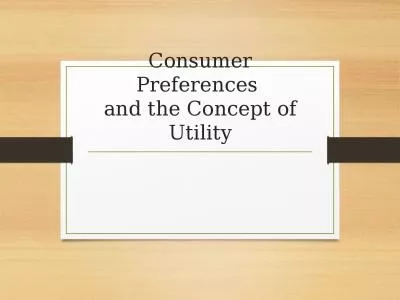PPT-Risky Curves: From Unobservable Utility to Observable Opportunity Sets
Author : martin | Published Date : 2024-01-13
Daniel Friedman UC Santa Cruz Shyam Sunder Yale University expanding into book with Duncan James and R Mark Isaac ESA Tucson November 17 2012 2 Risky Curves 2
Presentation Embed Code
Download Presentation
Download Presentation The PPT/PDF document "Risky Curves: From Unobservable Utility ..." is the property of its rightful owner. Permission is granted to download and print the materials on this website for personal, non-commercial use only, and to display it on your personal computer provided you do not modify the materials and that you retain all copyright notices contained in the materials. By downloading content from our website, you accept the terms of this agreement.
Risky Curves: From Unobservable Utility to Observable Opportunity Sets: Transcript
Download Rules Of Document
"Risky Curves: From Unobservable Utility to Observable Opportunity Sets"The content belongs to its owner. You may download and print it for personal use, without modification, and keep all copyright notices. By downloading, you agree to these terms.
Related Documents

